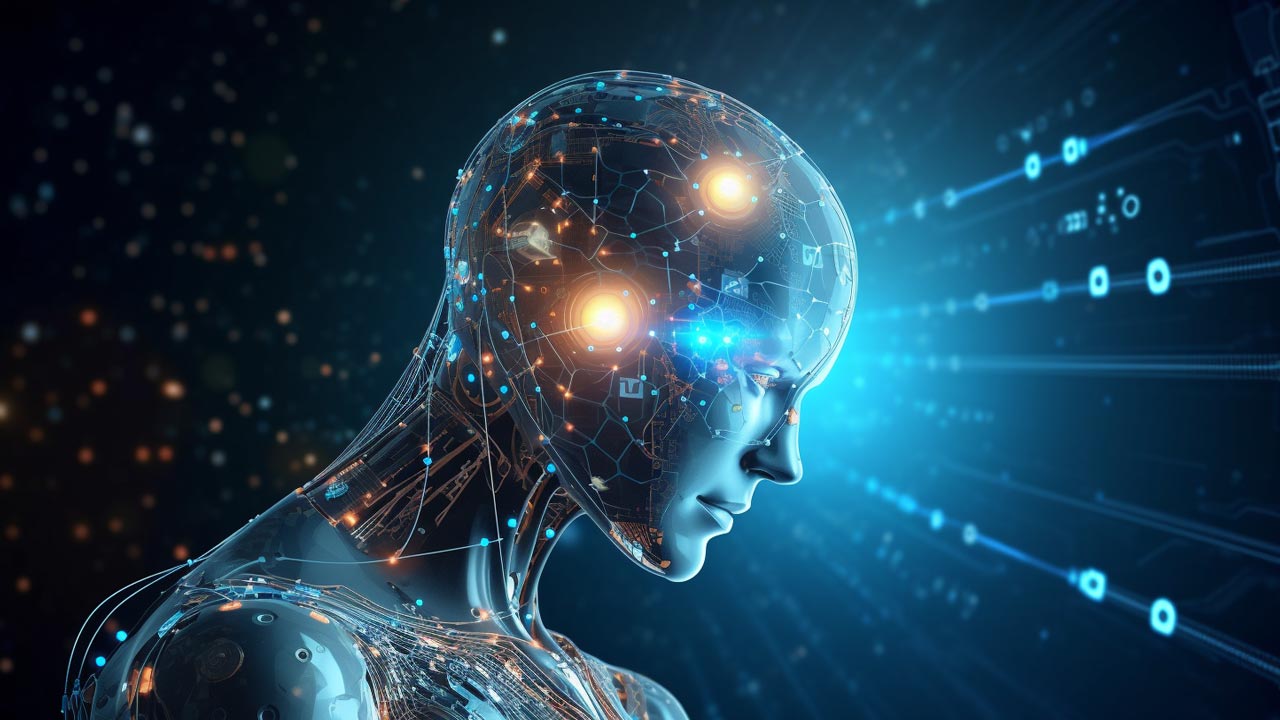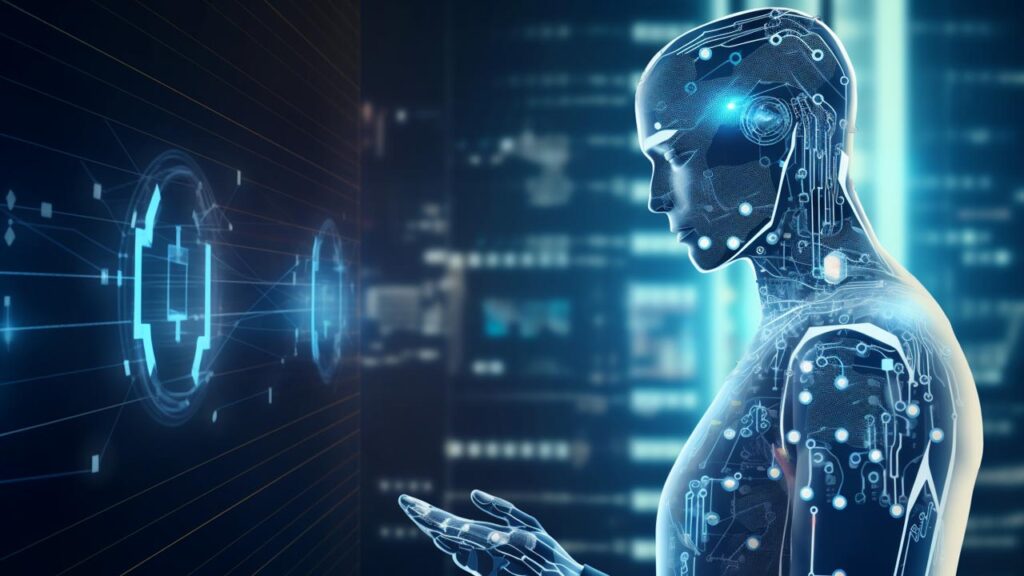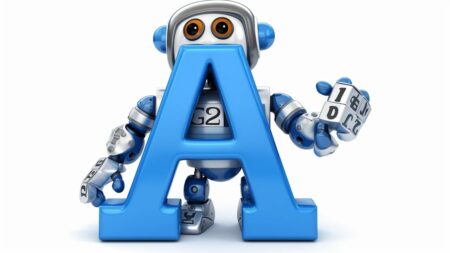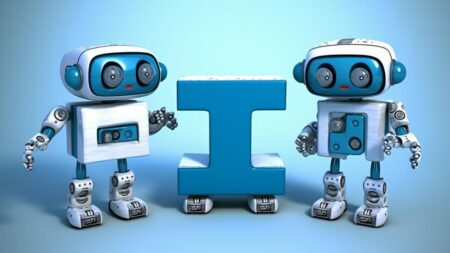AI technology, once the fodder for science fiction, is now a tangible reality shaping countless facets of our everyday life. From personalized Netflix recommendations to Siri or Alexa answering your queries, AI is present in more places than most people realize. Yet, despite its prevalence, AI remains a somewhat elusive concept for many.
This article aims to break down AI into digestible, easily understood components, serving as a comprehensive guide for beginners. You’ll learn what AI is, its various types, how it works, its implications, and why it matters. We’ll delve into use cases of AI, explore its potentials and limitations, and provide insight into its future. For businesses, understanding AI is not just beneficial; it’s essential. But this guide isn’t just for business owners; it’s for anyone curious about the technology shaping our world.
By the end of this article, you will gain a robust foundational understanding of AI. Moreover, you will appreciate the power of AI, not just as a technological tool but as a critical driver of innovation and progress. So, whether you’re a curious individual, a technology enthusiast, or a business leader, there’s something in here for you.
Table of Contents
- Understanding Artificial Intelligence
- Types of AI: Narrow AI vs. General AI
- How Does AI Work?
- Implications of AI
- AI: Potentials and Limitations
- The Future of AI
- Frequently Asked Questions
- Final Thoughts
- Sources
Understanding Artificial Intelligence
Artificial Intelligence (AI) is a multidisciplinary branch of computer science that aims to create intelligent machines capable of performing tasks typically requiring human intelligence. The core pursuit of AI is to imbue machines with the ability to analyze their environment, learn from experiences, and make decisions or solve problems, just like a human would.
AI typically involves:
- Machine Learning (ML): ML is a subset of AI where machines are fed data and use statistical techniques to enable AI systems to learn and improve from experience.
- Deep Learning: This is a subfield of ML that models high-level abstractions in data using multiple processing layers (called deep neural networks). Deep learning can handle large datasets and can be very effective in decision-making tasks.
- Natural Language Processing (NLP): NLP involves the interactions between computers and human language. It allows systems to understand, interpret, generate, and make sense of human language in a valuable way.
- Computer Vision: This is a scientific field that allows computers to gain high-level understanding from digital images or videos. It involves extracting and interpreting visual data to understand and make decisions about the physical world.
- Robotics: This field involves creating machines that can move and react to sensory inputs. Robots use AI technologies to understand their environment, navigate it successfully, and carry out many tasks.
AI has been transformative in various industries, including healthcare, finance, entertainment, transportation, and marketing, among others. It has enabled major breakthroughs such as self-driving cars, voice-assistant systems, predictive analytics, and many more.
Yet, it’s important to remember that AI technology isn’t just about creating machines that mimic human intelligence. It’s about building algorithms that can learn and make intelligent decisions, helping us solve complex problems, predict outcomes, and streamline decision-making processes.
AI has the potential to exponentially increase efficiency and accuracy across multiple domains. However, like all technologies, it is a tool. Its ethical implications and the need for proper management and regulation cannot be understated. In the following sections, we will delve deeper into the different types of AI, how it works, its implications, potentials and limitations, and what we can expect from AI in the future.
Types of AI: Narrow AI vs. General AI
To better understand the breadth of Artificial Intelligence, it’s crucial to recognize its different types: Narrow AI and General AI. Each represents a distinct level of capability and complexity, and they have unique implications for our society and the world at large.
Narrow AI
Also referred to as Weak AI, Narrow AI is a type of artificial intelligence that is designed to perform a specific task, such as voice recognition, recommendation systems, image recognition, or driving a car. These AI systems operate under a limited set of constraints and are only “intelligent” in their specific narrow field.
An excellent example of Narrow AI is the digital assistant on your smartphone, like Siri or Google Assistant. It can answer your questions, set reminders, send messages on your behalf, and more, but it operates under a very defined and limited set. Its learning and decision-making capabilities are strictly confined to what it has been programmed to do, and it cannot handle tasks beyond its specific programming.
General AI
Also known as Strong AI or Full AI, General AI refers to systems that possess the ability to perform any intellectual task that a human being can. They can understand, learn, adapt, and implement knowledge from one domain to a different one. In other words, this type of AI has a form of consciousness and self-awareness, and it can understand context, make judgments, and apply knowledge in ways that Narrow AI cannot.
Currently, General AI is more theoretical than practical, as we haven’t yet created any AI system that fully exhibits these characteristics. However, this is the kind of AI often depicted in science fiction and is the ultimate objective in AI research.
Understanding the difference between Narrow AI and General AI is important. It helps us appreciate the complexity of AI and sets realistic expectations for its capabilities. As of now, all existing applications of AI fall under the Narrow AI category, doing specific tasks incredibly well but still lacking the overall intelligence and self-awareness associated with General AI.
How Does AI Work?

To grasp the working of Artificial Intelligence (AI), it’s essential to understand its primary subsets: Machine Learning (ML), Deep Learning, and neural networks.
Machine Learning
Machine Learning is the backbone of AI. It refers to the process by which machines, or more specifically algorithms, improve their performance on a task through exposure to data, thus “learning” from experience. The central premise of ML is to build algorithms that can receive input data and predict an output, relying on statistical analysis to provide a range of outcomes.
There are three primary types of machine learning: supervised learning, unsupervised learning, and reinforcement learning.
- Supervised Learning: This is the most common method, where the model learns from labeled training data, and its ultimate goal is to predict the output when it’s given new input data.
- Unsupervised Learning: Here, the model learns from unlabeled data. It identifies patterns and relationships in the input data and structures the input into clusters or other organized formats.
- Reinforcement Learning: This type of learning involves an agent that interacts with its environment by producing actions and learns from the errors or rewards it receives.
Deep Learning
Deep Learning, a subset of ML, uses complex neural networks with many layers (hence the name “deep”) to model high-level abstractions in data. This allows the system to process data in a structured manner similar to how a human brain would.
Neural Networks
Neural networks are a critical part of Deep Learning. They are designed to mimic the human brain’s functioning—learning from the data they’re fed by recognizing patterns and making decisions.
Each layer of a neural network processes an input, passes on a modified version of that input to the next layer, and this process continues until the final layer outputs a prediction. This multi-layered, complex processing system enables deep learning algorithms to recognize patterns with extreme accuracy.
The fusion of machine learning, deep learning, and neural networks is what allows AI to work. By ingesting large amounts of data and learning to interpret it, AI systems can carry out tasks, make predictions, and offer recommendations with remarkable precision.
This, however, is a simplified explanation. The actual processes involved in AI are intricate and require a nuanced understanding of various algorithms and computational structures. But for a beginner’s guide, recognizing these basic concepts—machine learning, deep learning, and neural networks—is a good start.
Implications of AI

Artificial Intelligence (AI) is not just a technological innovation; it’s a transformative force with vast implications across all sectors of society. The following are some key areas where AI has already made significant impacts and promises to bring even more changes.
Economic Implications
AI has the potential to bring about significant economic changes, from productivity enhancement to employment shifts. By automating routine tasks, AI allows humans to focus more on complex problem-solving and creative tasks, leading to productivity improvements.
However, automation can also displace jobs, particularly those involving repetitive tasks. A study by McKinsey estimates that about 30% of jobs could be automated by 20301. This poses the challenge of re-skilling and up-skilling the workforce to prepare for a future where AI plays a significant role.
Healthcare
AI has made impressive strides in healthcare, with applications ranging from diagnostic imaging, drug discovery, personalized medicine, and patient care. AI algorithms can analyze vast amounts of medical data to predict disease patterns and recommend treatment plans. For instance, Google’s DeepMind Health can help clinicians predict a patient’s deterioration2.
Privacy and Security
AI-driven systems collect and analyze vast amounts of data, which raises privacy concerns. On the one hand, AI can significantly enhance cybersecurity by detecting unusual patterns and predicting cyber threats. On the other hand, if not properly managed, AI systems can be exploited to infringe on privacy or even enable cybercrimes.
Social and Ethical Implications
AI systems can amplify existing biases if they’re trained on biased data, leading to unfair outcomes. Moreover, the decision-making processes of AI systems are often opaque, a problem known as the “black box” problem. This lack of transparency makes it difficult to understand how AI systems arrive at their decisions, raising ethical questions about accountability and explainability.
Environmental Implications
AI can also play a vital role in addressing environmental challenges. For example, it can optimize energy usage in smart grids, predict and monitor climate change, and help in wildlife conservation.
In summary, the implications of AI are profound and far-reaching. Harnessing its benefits while mitigating its potential risks and challenges requires informed decision-making, robust regulatory frameworks, and ongoing dialogue among stakeholders.
AI: Potentials and Limitations
As we explore the ever-evolving world of Artificial Intelligence (AI), it’s important to understand its immense potential and the inherent limitations. Acknowledging both sides of the spectrum can help us use this technology responsibly and effectively.
Potentials of AI
- Enhancing Productivity: AI can automate repetitive tasks, freeing up humans to focus on complex problem-solving and creative tasks. This can lead to significant productivity gains across industries.
- Improving Decision Making: AI systems can process and analyze vast amounts of data to generate insights that inform decision-making. Whether it’s predicting consumer behavior in marketing, identifying trends in financial markets, or diagnosing diseases in healthcare, AI’s data-driven insights can significantly enhance decision-making processes.
- Innovation and New Services: AI is the driving force behind numerous innovative products and services. From autonomous vehicles to virtual personal assistants and AI-powered customer service, the technology is opening up new possibilities that were previously unimaginable.
- Addressing Grand Challenges: AI has the potential to help address some of the world’s most pressing challenges. For example, AI algorithms are being used to predict climate patterns, optimize resource use, and even accelerate the discovery of new drugs.
Limitations of AI
While AI has immense potential, it’s not without its limitations and challenges.
- Data Dependence: AI systems, particularly those based on machine learning, require large amounts of data to learn and make accurate predictions. They’re only as good as the data they’re trained on. If the training data is biased or incomplete, the AI system’s outputs can also be biased or inaccurate.
- Lack of Common Sense: Today’s AI systems lack common sense – the kind of knowledge about the world that humans naturally acquire and use in decision-making. While humans can understand context and make logical deductions, AI systems struggle with such tasks.
- Transparency and Trust: Many AI systems, especially deep learning models, are often seen as “black boxes” because their decision-making processes are not transparent. This lack of transparency can make it difficult to trust AI systems, particularly in critical areas like healthcare or judicial systems.
- Ethical and Social Considerations: AI can have significant ethical and social implications, such as job displacement due to automation or privacy concerns due to data collection. Additionally, if an AI system is trained on biased data, it can perpetuate or even amplify existing biases.
In conclusion, while AI holds vast potential, it’s not a panacea. It’s a tool that needs to be used thoughtfully and responsibly. Understanding AI’s limitations is just as important as recognizing its capabilities. As we navigate the AI era, we must strive to harness its potential while acknowledging and addressing its limitations.
The Future of AI

As we stand on the cusp of the AI revolution, it’s exciting to contemplate what the future might hold. Here are some anticipated developments in the field of AI.
Increased Automation
AI is expected to automate tasks across a wide array of industries, from manufacturing to customer service, healthcare, and more. As AI systems become more sophisticated, they’ll be able to handle increasingly complex tasks. This increased automation, while raising concerns about job displacement, could also lead to new job creation and enhanced productivity.
Advancements in AI-Healthcare
AI’s potential in healthcare is enormous. From diagnosing diseases more accurately, personalizing treatment plans, discovering new drugs, and improving patient care, the possibilities are extensive. As the technology improves, we’re likely to see more widespread adoption and more profound impacts in the healthcare sector.
Ethical AI and Regulation
As AI becomes more prevalent, there’s growing recognition of the need for ethical AI and regulatory oversight. This includes addressing issues like transparency, privacy, bias, and accountability. Governments and organizations worldwide are already working on establishing guidelines and regulations to ensure the responsible use of AI.
Progress Towards Artificial General Intelligence (AGI)
While we’re still far from achieving Artificial General Intelligence (AGI) – AI systems with general cognitive abilities similar to human intelligence – many researchers are focused on making strides in this direction. The journey towards AGI will undoubtedly involve significant challenges, but the potential rewards could be immense.
AI and Climate Change
AI can play a crucial role in combating climate change. From optimizing energy usage to predicting and monitoring climate patterns, AI offers promising solutions to one of the biggest challenges of our time. Continued advancements in AI could bolster these efforts significantly.
In conclusion, the future of AI is exciting and brimming with potential. However, alongside the benefits come significant challenges that we must navigate responsibly. By addressing issues like privacy, bias, and job displacement and establishing robust ethical and regulatory frameworks, we can ensure that the benefits of AI are broadly shared.
Frequently Asked Questions
Final Thoughts
AI technology is reshaping the world as we know it. It has immense potential but also presents significant challenges. It’s crucial to understand AI’s workings and implications, whether you’re a business leader, a policymaker, or a curious individual. As we move towards an AI-driven future, such understanding will be vital in making informed decisions and navigating potential risks and opportunities.
Sources
- Artificial Intelligence – What it is and why it matters
- Artificial Intelligence (AI) Britannica
- Artificial intelligence (AI) Investopedia
- Artificial Intelligence: Types, Uses, and Examples
- Understanding AI Technology
- Artificial Intelligence (AI) and Machine Learning (ML): Definition, Differences, and Use Cases
- The Future of Artificial Intelligence















Leave A Comment